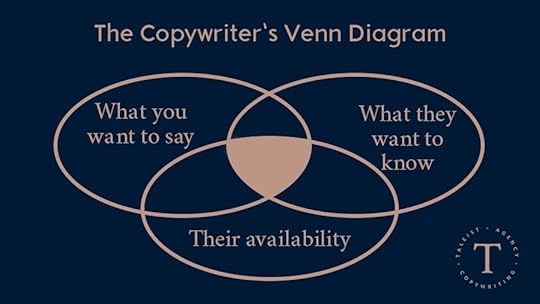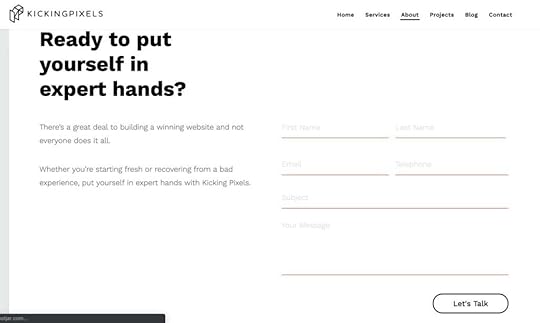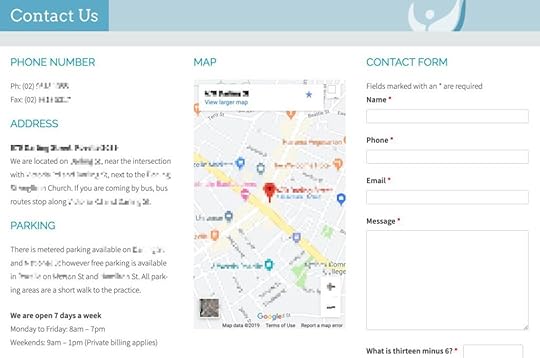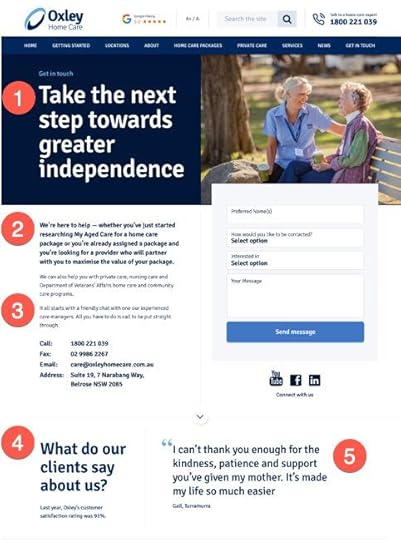Steven Lewis's Blog, page 13
August 18, 2019
Increase your conversion rate by testing your copywriting
A hundred years of direct mail advertising has plenty to teach online marketers.
One of the things it’s been very successful at teaching is A/B testing.
An A/B test is where you present two groups of prospects with slightly different versions of your marketing material.
The A version and the B version.
You might try two versions of a headline on a webpage and see which one gets more clicks.
That version is the winner and you roll it out to everybody.
The received wisdom is that you should change only one thing between the A version and the B version.
If you’ve studied A/B tests at all, you’ll have seen them used to prove, say, that green buttons get more clicks than red buttons.
Then you’ll have seen that a follow-up A/B test proved that a button of a different shade of green got more click than the original green button.
But you can only do that level of fine-grain testing if you have massive volumes of traffic.
If you have 10,000 visitors a day to your website, you’ll have statistically meaningful data in no time.
But if you’re like most businesses, it’ll take forever for you to find out if “discover more” converts better than “learn more” as a call to action.
However, that doesn’t mean you shouldn’t be A/B testing.
With lower traffic levels you just need to shelve the received wisdom and be more sweeping in your tests.
Rather than just changing the headline, you can completely change a landing page, for instance.
By making bolder differences between the A and the B version, you’ll get a quick sense of the broad direction you need to follow to get a higher conversion rate.
And you’ll get that feedback it faster than waiting months to find out which shade of green wins in a more traditional A/B test.
We have more conversion rate optimisation tips here. Also, if you want more information about why you need to make bold tests when you don’t have high traffic, you should read Making Websites Win.
The post Increase your conversion rate by testing your copywriting appeared first on Taleist Agency.
August 14, 2019
The copywriter’s Venn diagram
If you want people to read what you have to say, this simple copywriting Venn Diagram will help.
 The copywriter’s Venn diagram will keep your copywriting on track.
The copywriter’s Venn diagram will keep your copywriting on track.The copywriter’s Venn Diagram covers three things.
The first oval is the most obvious.
What do you want to tell people?
We are all exceptional at this part of marketing.
We know EXACTLY what we want you to know…
We want you to know all the reasons why you should buy from us.
We want you to know how you can make that purchase.
And we will shout that information at you from our emails, our videos and our websites.
But telling people what we want them to know will go nowhere if that doesn’t overlap with they WANT to know.
If you have low conversion rates and high bounce rates — generally speaking a low uptake of your offer — you should start by asking yourself whether you’ve thought about what your audience WANTS to know and where that overlaps with what you want to tell them.
The third overlap in your Venn Diagram is with what your reader has time for right now.
How often have you had someone turn up for a half an hour meeting with 60 minutes of slides in their PowerPoint?
You can’t tip a bucket of information into a thimble of willingness to listen.
It’s easy to focus on what YOU want to tell people.
But if you also consider what THEY want to know and how much TIME they have, you’ll see an immediate the difference in your conversion rate.
There are more conversion rate optimisation tips here.
The post The copywriter’s Venn diagram appeared first on Taleist Agency.
July 29, 2019
What your prospects aren’t telling you could explode your conversion rate
Let’s talk about desire and the role it plays in your business.
I want to talk about desire as a copywriter because copywriting can’t sell somebody something they don’t already desire on some level.
The art of copywriting is about taking your prospects’ hopes, dreams, fears and desires then focussing them on your product or service.
That means you have to know what those underlying forces are.
And that takes some careful profiling because your customers are unlikely to tell you their innermost drivers.
No one walks into a car dealership and asks which model will make them look the most successful — let alone which one will make them look most virile.
But no one spends $120,000 on a car because a Mazda wouldn’t hold the road well enough on the way to Woolies.
Because desires are unspoken, you can’t always call them out directly in your copywriting.
What you do is speak to them in your tone, your examples and your choice of words.
A couple of levels up from Uber X is “Uber Select”, not “Uber You’ll Feel Better About Yourself Than You Would in The Back of a Yaris”.
That choice of “Select” is subtle but it speaks so powerfully to the sort of person who’ll pay a bit extra to get from A to B because of what it says about them.
Do they see themselves as a thrifty Uber X person or as a “Select” sort of person?
So do you think the the copywriting you’re relying on for sales takes into account those underlying desires, hopes and fears on your product or service?
If it doesn’t, it should.
We have lots more conversion rate optimisation tips.
The post What your prospects aren’t telling you could explode your conversion rate appeared first on Taleist Agency.
July 9, 2019
Could the lowly Contact Us page be your next conversion optimisation hack?
 This is a great sample of a Contact Us page. It reminds the reader of two of the site’s key points. (1) Kicking Pixels are experts in conversion rate optimisation (CRO), and (2) not every web developer is expert in CRO. It also builds the reader’s confidence about getting in touch by assuring them that Kicking Pixels welcomes their call whether they’re a sophisticated buyer or not.
This is a great sample of a Contact Us page. It reminds the reader of two of the site’s key points. (1) Kicking Pixels are experts in conversion rate optimisation (CRO), and (2) not every web developer is expert in CRO. It also builds the reader’s confidence about getting in touch by assuring them that Kicking Pixels welcomes their call whether they’re a sophisticated buyer or not.Two of the three sample Contact Us pages in this post will convert much better than the third. More importantly, which one is most like your Contact Us page? Here’s why it matters…
This page includes samples of two Contact Us pages with copywriting by us and one example pulled at random from the internet. Why? Because I’m often asked why the lowly Contact Us page is included in our critical website copywriting package…
“But it’s just for our phone number and email address. What would you write?”
That’s like Amazon saying its checkout page is “just” for credit card numbers so why would Amazon’s designers spend any time working on it when in fact…
… The checkout page is the whole point of Amazon’s business. What business would Amazon have if people didn’t checkout?
Isn’t your Contact Us page the same? Isn’t visitors contacting you pretty much the whole point of your website?
So do you just shove a contact form in their face?
Or do you remind them of what you offer— a recap that will nudge more of them into committing to making contact?
 This sample Contact Us page is not great. This Contact Us page makes clear how you contact this GP but not why you would want to. And this isn’t the only GP in the area. There are at least two other practices in walking distance of this one.
This sample Contact Us page is not great. This Contact Us page makes clear how you contact this GP but not why you would want to. And this isn’t the only GP in the area. There are at least two other practices in walking distance of this one.So if getting visitors to contact you is the whole point of your website, why take your foot off the accelerator when they reach your Contact Us page?
The Contact Us page marks a crucial point in your conversions — will the reader contact you or not?
Your Contact Us page has work to do in order to make sure the answer to that question is yes.
So don’t let yourself think stuff it, my prospects know what a contact form does; let’s just leave them to it.
Your website visitor has reached your Contact Us page. They’re so nearly where you want them. Keep going…
And here’s an example of how one excellent Contact Us page does just that…
5 copywriting secrets of a great Contact Us page
 A sample of a great Contact Us page. This one is working from the top to the bottom of the page to give visitors the extra nudge they might need.
A sample of a great Contact Us page. This one is working from the top to the bottom of the page to give visitors the extra nudge they might need.How to write a great Contact Us page
Remind them what you offerThe headline of a great Contact Us page reminds the visitor why they’re on this website.
In this sample, it’s to find ways to maintain their independence. And what exactly do they need to do next to stay independent? Contact us.
Just because you’re certain you want your website visitors to call you doesn’t mean they’re going to be certain you want to hear from them.
This paragraph builds confidence by assuring the visitor that their call on any of the listed topics is welcome. And a more confident reader is more likely to make that call or fill in that contact form.
When you call Oxley Home Care, you get put through to a care manager, not a call centre. This paragraph recaps that point of difference, reminding you why it’s us you want to contact, not a competitor whose website you’ve also visited.
This future pacing of what the visitor will experience also builds confidence… Don’t worry, this isn’t going to be a high-pressure encounter with a salesperson. It’s going to be a “friendly” call with a “care manager”, not a salesperson at all.
All our contact details are here ready for you to dial or type, but we’re not taking our foot off the accelerator. We’re selling the call right to the bottom of the Contact Us page.
First in this sample, here’s a little more proof: 91% of the people who’ve called and chosen us have been glad they have.
In case step 4 wasn’t enough, here’s more proof in this example of a Contact Us page that works — it’s a testimonial that hits a number of the website’s key points, especially that we make life easier not just for our clients but for their families.
So which of the three Contact Us pages discussed on this page is most like your site?
If it’s the one with nothing but contact details, you’re looking at a major opportunity to improve your conversion rate on the lowly Contact Us page.
You’ll find more conversion rate optimisation (CRO) tips here.
The post Could the lowly Contact Us page be your next conversion optimisation hack? appeared first on Taleist Agency.
July 8, 2019
Copywriting’s answer to try before you buy
What’s the likely difference between these two pieces of copy for a hotel in Thailand?
Version one: “Our lagoon-pool features a full bar service.”
Version two: “Lounge by our lagoon pool, cooled by an Andaman Sea breeze while you sip Bacardi from a coconut…”
I don’t know if people still drink Bacardi, but you get the point.
Help your prospects imagine what would happen after they say yes to you and they’re more likely to give you that yes.
Inviting your prospect to imagine their lives after taking you up on your offer is called future pacing.
Future pacing is copywriting’s version of trying before you buy.
You imagine yourself, if only for a second, as a guest at the hotel in Thailand — the sea breeze over your Speedos, the rum, the total relaxation.
And YOU’RE not off the hook just because you don’t sell something exotic.
Future pacing is as relevant to accountants as it is to beach holidays. How do your clients feel now — overwhelmed by cashflow problems? And how would they feel after you solved those problems for them?
Probably ready to celebrate with a Bacardi in a coconut.
Have a look at your website or landing page. Are you future pacing your prospects?
Are you just telling them what you do or are you letting them feel how they would feel after they said yes to you?
Want more conversion rate optimisation tips?
The post Copywriting’s answer to try before you buy appeared first on Taleist Agency.
June 28, 2019
Internal communications challenges? Create Knowledge Volunteers
Knowledge Volunteers are employees who actually WANT the information on offer in your internal communications. That’s exactly what you need when you can’t make employees read emails, visit the intranet or turn up for lunch-and-learns.
You work in a large organisation and you have something you want employees to know.
The problem in large organisations is that employees have almost unlimited places to hide from information they don’t want to acquire.
They don’t read the emails.
They don’t look at the intranet.
They don’t show up for the lunch-and-learns.
Unless you have a way to MAKE your colleagues take this new knowledge onboard, you need to persuade them that the information you have is something they WANT to learn.
We say that you need to turn your colleagues into Knowledge VOLUNTEERS.
We like the concept of a Knowledge Volunteer because it reframes a project.
It changes it from a communication project into a marketing project — even if it’s internal.
“Communication” implies that if you’ve said it or published it on your intranet, the job is done.
But if you want people to actually have this information, the job is not done unless they’ve actually taken it onboard.
That means they need to make a choice to do so.
And THAT means you need to MARKET the information to them — because marketing is all about creating volunteers. Unless you’re the government, you can’t make somebody buy something. They have to volunteer to pay.
Information is just another product. And if information is YOUR product, it’s Knowledge Volunteers you need to create.
So if you’ve got an internal communications challenge in your organisation, it’s very likely you could solve it by reframing your thinking in terms of marketing and creating Knowledge Volunteers.
We have more tips on improving your conversion rate — internal and external — here.
The post Internal communications challenges? Create Knowledge Volunteers appeared first on Taleist Agency.
June 24, 2019
The clever marketer’s way to bring visitors back to your website
So your website visitor didn’t buy. And they didn’t download your lead magnet either. Put those things together and it means you don’t know who they are. And you don’t have their email address. But that DOESN’T mean you can’t contact them
If you have a Google or a Facebook pixel on your website, you can start to show ads on Facebook or Google to that “lost” visitor.
Those ads will remind them who you are and what you offer.
You can even show different ads to different types of visitor.
If a visitor looked at one product or service on your site, you can show ads related to that product or service.
Tagging visitors with a pixel and showing them ads when they’re off your site is called “remarketing”.
Remarketing is how you yourself come to see ads from a company for days or weeks after visiting their website.
Plenty of people think remarketing is “creepy” — the idea that you’re following strangers around the internet.
Other people argue that it’s helpful — someone who saw your site but didn’t get around to taking action is given a breadcrumb trail to find their way back to you.
Whatever you think about it as a tactic, remarketing is very effective at bringing visitors BACK to your website.
And when they’re back on your website, you have another chance to convert them.
This is just one of seven tips for things ANYONE can do to increase their conversion rate. You can get all seven conversion rate optimisation tips here.
The post The clever marketer’s way to bring visitors back to your website appeared first on Taleist Agency.
June 17, 2019
Why even your best customers aren’t buying what you’re selling
Even your best customers probably aren’t buying what you’re selling. Why?
Because what you’re selling is a collection of features.
And what your customers are buying is a collection of benefits.
What do I mean by that and why does that matter?
Most websites concentrate on selling the features of their product or service — “fast”, “reliable”, “local”, “experienced”, etc.
But your customers are not trying to buy a fast, reliable drill. They’re trying to buy a hole. They want to hang a picture; they want to put up shelves. It’s not about owning a drill.
You don’t use Uber because you get to drive around in someone else’s car. That’s a feature.
You use Uber because you want to be somewhere else. That’s a benefit.
I’ll bet if you look at your website right now, you’ll see many, many features of what you do — you’re professional, you’re passionate about customer service, you have 25 years of experience in the industry….
And I’ll also bet that no more than 20% of those features are tied to a benefit.
Why would your customer care that you’ve been in the industry for 25 years?
What BENEFIT are they getting that they wouldn’t get from someone who’s been in the industry for 20 years?
I know you think but the benefit is obvious. I know you think your reader will see your list of features and easily in their own head connect them to benefits.
I also know that your competitor who switches things around and sells benefits not features will outperfom you every time.
If you want to raise your conversion rate, make sure every single feature you list is connected to a benefit.
This is just one of seven tips for things ANYONE can do to increase their conversion rate. You can get all seven conversion rate optimisation tips here.
The post Why even your best customers aren’t buying what you’re selling appeared first on Taleist Agency.
June 9, 2019
How to get your website visitors’ contact details (even if they’re not ready to buy)
Got a big CONTACT US button on your website?
There’s just one problem with that… And it’s a massive problem…
Only about 4% of your website visitors are ready to buy.
The other 96% are not likely to pick up the phone or email you.
Not right now because they’re not ready.
That’s 96% of visitors not ready to hit that Contact Us button and tell you who they are.
So how do you get more the 96% of to give you their details?
You think about what else they want.
Then offer that to them as long as they give you their email address.
That offer is called a “lead magnet”.
A lead magnet is something you offer to give a website visitor in return for their email address.
It’s usually something downloadable — like an infographic or a report like a list of seven things anyone can do to increase their conversion rate…
When your visitor agrees to give you their email address in exchange for valuable information, yow who they are.
But that’s just the beginning.
Now you know who they are, you can follow up with them until they ARE ready to buy.
This is just one of seven tips for things ANYONE can do to increase their conversion rate. You can get all seven conversion rate optimisation tips here.
And of course if you would like help coming up with an attractive lead magnet to offer your visitors, please…
The post How to get your website visitors’ contact details (even if they’re not ready to buy) appeared first on Taleist Agency.
June 3, 2019
How your copywriting can prove you know what you’re talking about
You know what people who don’t know what they’re talking about absolutely love… They love jargon.
They love long sentences stuffed with bullshit.
Sometimes jargon is shorthand that speeds things up for people in the industry.
More often, jargon is baffling even to people inside the industry.
Ask two of them what one polysyllabic piece of nonsense means and you’ll get two different answers.
Your surgeon is an expert with more than a decade of training in science and technique.
Do you think any less of your surgeon because they say “spreading” instead of “metastasising”.
If you’re like most people, you’d be more comfortable with a surgeon you understood over one who baffled you.
Take it out of medicine and into business.
Do you think Richard Branson is an idiot because it’s easy to understand every word he says?
So why would YOUR prospects think less of you because you write in plain English?
In fact, test after test proves definitively, that the simpler your make your writing, the higher your conversion rate will be.
People DON’T trust people they DON’T understand.
People buy MORE from people they TRUST.
If you want prospects to buy more from you because they trust you, try this with your website…
Find a friend who is not in your industry.
Ask them to read your website.
Then ask them to tell you what you do and why they should use you rather than someone else.
If they can tell you, you’ve nailed it.
If they start describing a business you don’t recognise as your own, you’ve discovered a massive opportunity to improve your conversion rate.
This is just one of seven tips for things ANYONE can do to increase their conversion rate. You can get all seven tips from Taleist.agency/7things.
The post How your copywriting can prove you know what you’re talking about appeared first on Taleist Agency.



